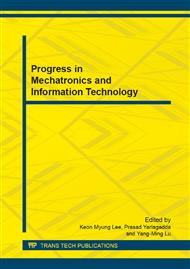p.896
p.900
p.905
p.910
p.915
p.920
p.924
p.929
p.935
PAHIS: A Platform for Agent-Based Hybrid Intelligent Systems
Abstract:
For solving the dynamic addition and removal problems of group-based agents at run-time, PAHIS is developed by analysis and mplementation. Category role, group roles, virtual organisation role, and dynamics rules are conducted in analysis. A self-organising ring-based architectural model has been employed to organise middle agents in implementation. PAHIS is implemented by using C and Socket and can be used as an infrastructure of agent-based hybrid intelligent systems.
Info:
Periodical:
Pages:
915-919
Citation:
Online since:
November 2013
Authors:
Price:
Сopyright:
© 2014 Trans Tech Publications Ltd. All Rights Reserved
Share:
Citation:


